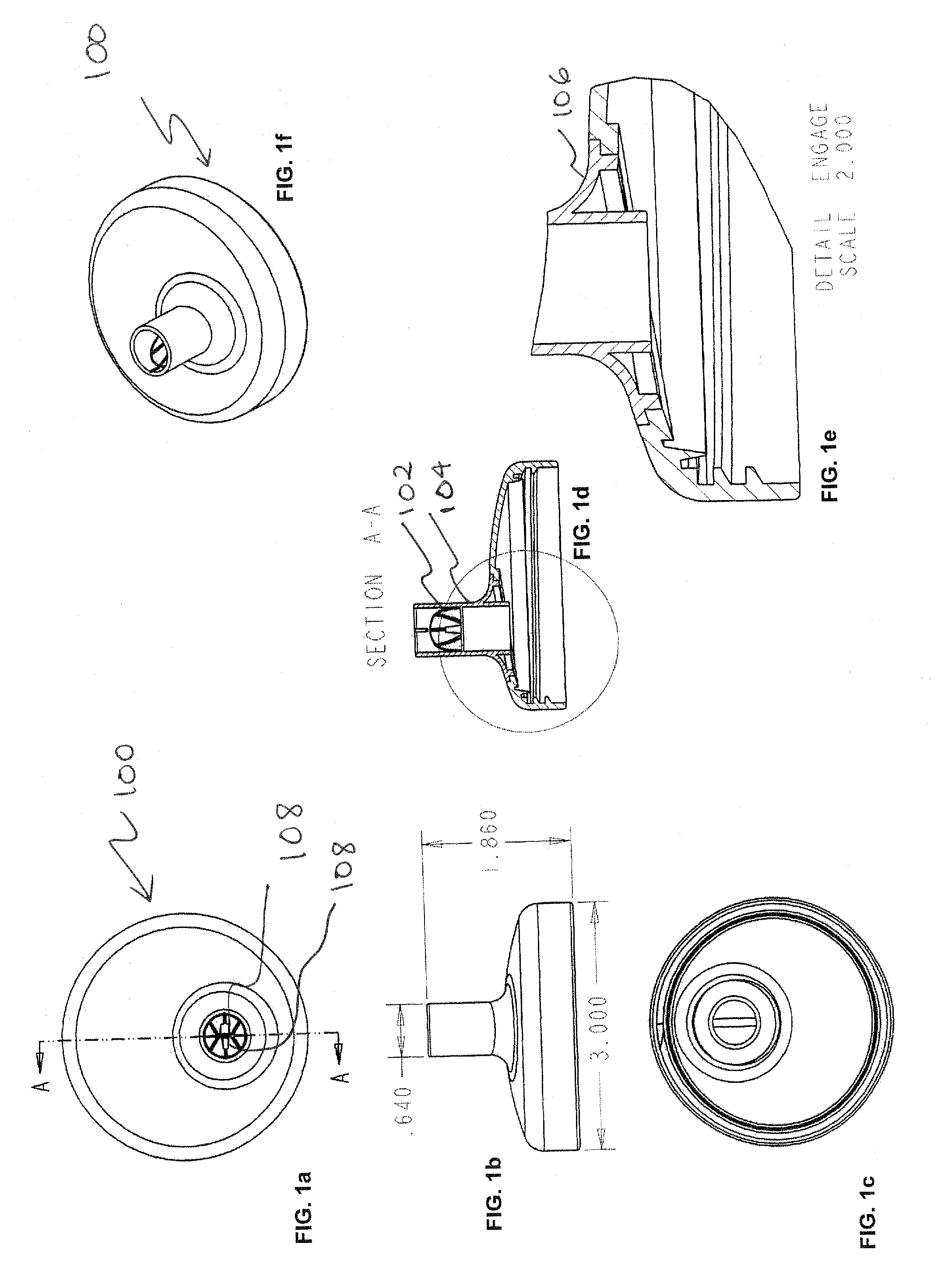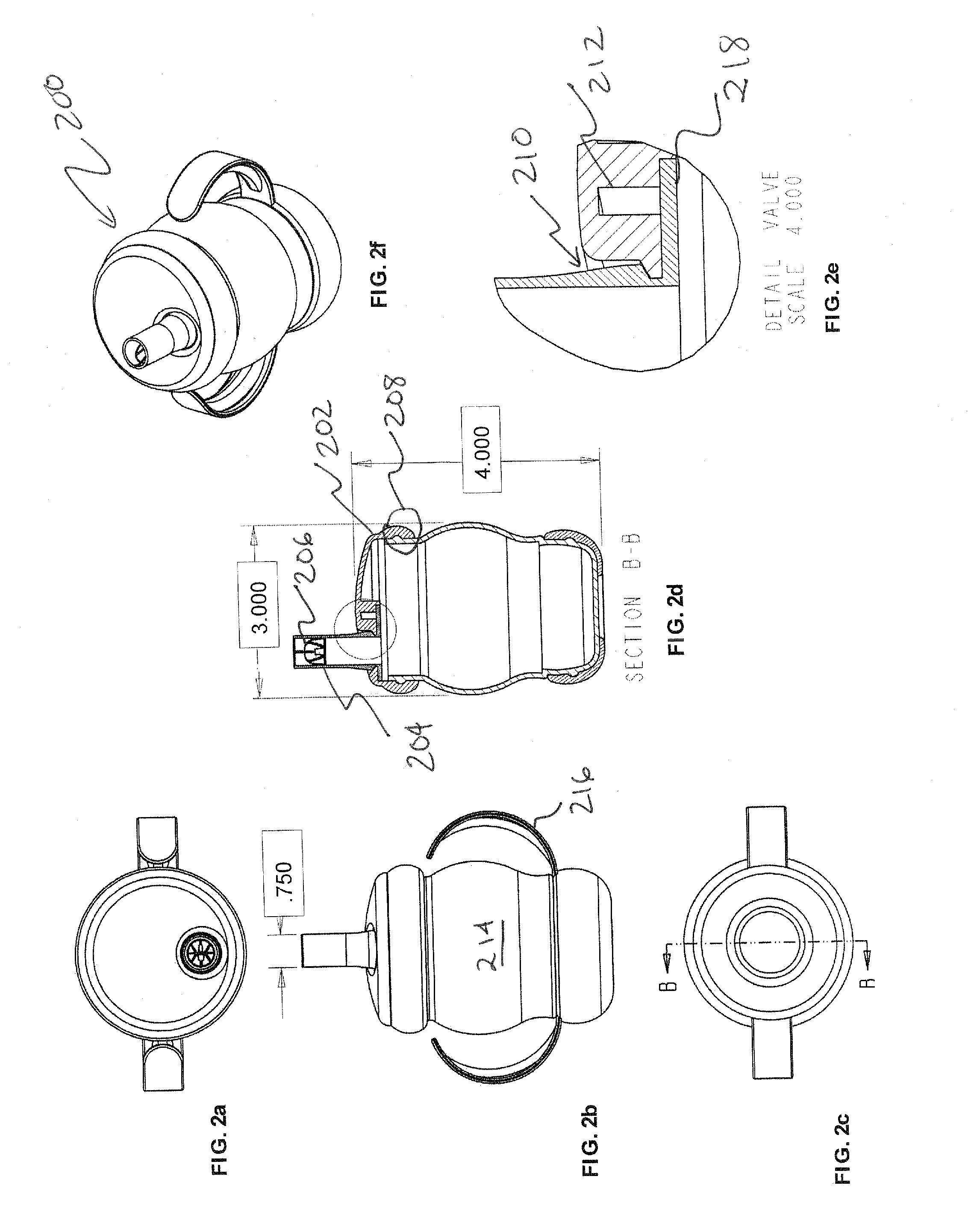Drinking devices for children with integrated valve
a technology of drinking device and integrated valve, which is applied in the field of leakage protection of child drinking containers, can solve the problems of fluid spillage, leakage, and forced evacuation of fluid, and achieve the effect of greater for
- Summary
- Abstract
- Description
- Claims
- Application Information
AI Technical Summary
Benefits of technology
Problems solved by technology
Method used
Image
Examples
first embodiment
[0039] A child's drinking container lid 100 (e.g. sippie cup lid) with leakage protection is shown in a first embodiment in FIGS. 1a-1f. These figures illustrate a retro-fit sippie cup lid. Instead of using an existing sippie-cup lid, the lid is removed and replaced, before or after distribution, with the present invention lid. The present invention lid 100 includes a flexible check valve 102 (as fully described in Applicants' commonly-owned U.S. publication number 2002-0159454 A1), preferably made of silicone (overmolded), contained within a flexible tube 104 integrated within the lid (e.g. injection molded polycarbonate) by retention of base section 106 (circumferentially extending). The flexible valve preferably is a crossbill (shown) with operatively joined multiple flexible flaps and orientated away from the fluid exit direction. However, a similarly configured duckbill or functional equivalent is within the scope of the present invention. The valve may, in some embodiments, in...
second embodiment
[0041] A children's drinking container (e.g. sippie cup) with leakage protection is shown in a second embodiment in FIGS. 2a-2f. These figures illustrate a sippie cup. Instead of using a traditional sippie-cup lid, the present invention lid 202 (e.g. injection molded polycarbonate) includes a removable tube 204 encapsulating a crossbill flexible check valve 206, preferably made of silicone (overmolded). The lid is attached as shown using a detent and rib snap fit 208, but other known methods of attachment can be used (e.g. threaded). A user would open the cover insert the valve tube through an opening in the cup 210 and reattach the cover. The flexible tube base 218 (circumferentially extending) would be retained between the cup 214 and the lid 202. A ventilation mechanism 212 is shown in FIG. 2e to equalize the pressure so that fluid can escape. The user would open the valve (actuate) with minimal pressure using lips or teeth and drain the fluid using normal drinking techniques. Wh...
PUM
 Login to View More
Login to View More Abstract
Description
Claims
Application Information
 Login to View More
Login to View More - R&D
- Intellectual Property
- Life Sciences
- Materials
- Tech Scout
- Unparalleled Data Quality
- Higher Quality Content
- 60% Fewer Hallucinations
Browse by: Latest US Patents, China's latest patents, Technical Efficacy Thesaurus, Application Domain, Technology Topic, Popular Technical Reports.
© 2025 PatSnap. All rights reserved.Legal|Privacy policy|Modern Slavery Act Transparency Statement|Sitemap|About US| Contact US: help@patsnap.com



